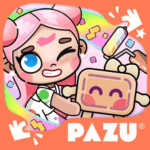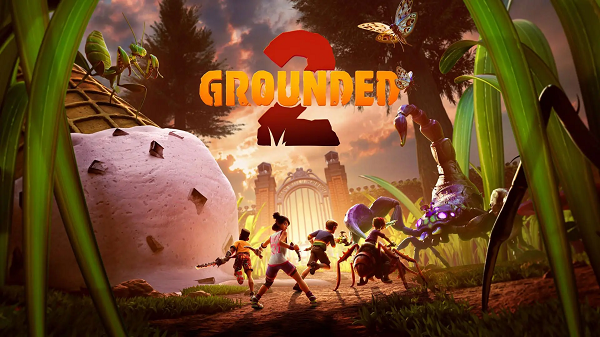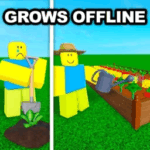Advertisement
Popular Now
Warning: This article contains major spoilers for Omori. If you haven’t played the game, proceed with caution.
Omori, developed by OMOCAT and released in December 2020, is a psychological horror RPG that delves into the complexities of trauma, guilt, and the human psyche. At its core, the game follows Sunny, a hikikomori teenager, and his dream-world alter-ego, Omori, as they navigate two contrasting realms: the vibrant, escapist Headspace and the stark, painful reality of Faraway Town. The narrative’s power lies in its unflinching exploration of repressed memories and their psychological toll, particularly through Sunny’s struggle to confront the truth behind his sister Mari’s death. This article examines a specific issue within Omori’s plot: the mechanism of repression as a coping strategy for trauma, its manifestation in the game’s dual worlds, and its ultimate resolution. By analyzing key moments across the game’s timeline, we uncover how repression shapes Sunny’s journey, affects his relationships, and underscores the game’s emotional resonance.
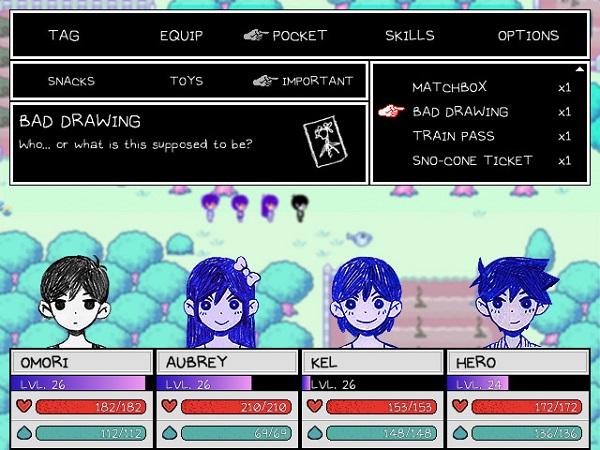
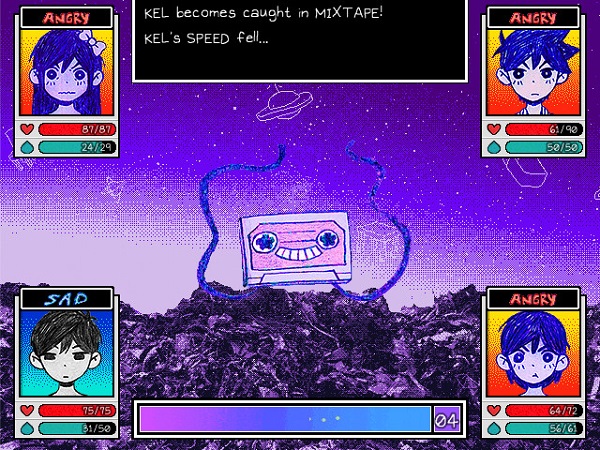
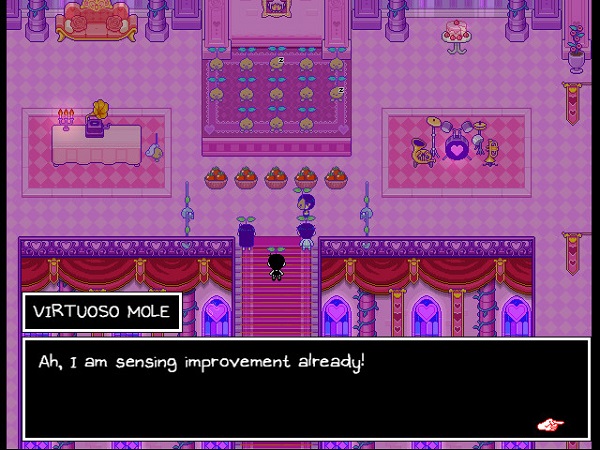
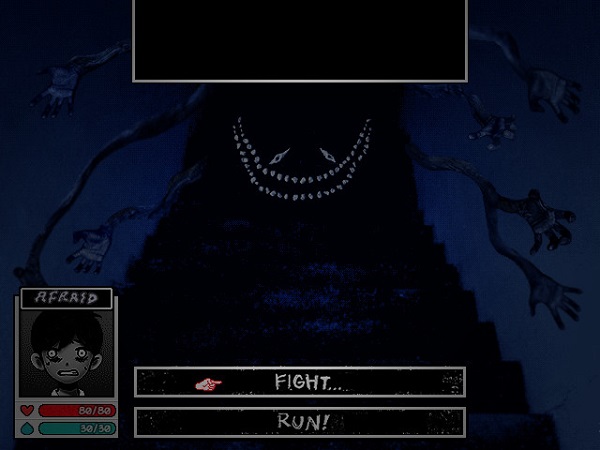
The Genesis of Repression: Sunny’s Trauma and White Space
The Catalyst of Loss
The story of Omori begins with a tragedy: Sunny’s accidental killing of his sister, Mari, during a moment of frustration before their violin duet. Unable to cope, Sunny and his friend Basil stage her death as a suicide, a decision that fractures their friend group and drives Sunny into isolation. This pivotal event, revealed gradually, is the root of Sunny’s repression, as he buries the truth deep within his psyche. White Space, a barren void where Omori resides, serves as the initial manifestation of this repression—a sterile, unchanging environment designed to shield Sunny from his guilt. The game’s opening line, “Welcome to White Space. You have been living here for as long as you can remember,” sets a haunting tone, suggesting a deliberate erasure of memory.A Shell of Protection
White Space is not merely a setting but a psychological construct. It contains minimal objects—a sketchbook, a laptop, a tissue box, and a black light bulb—each symbolizing Sunny’s limited emotional tools for coping. The act of stabbing himself with a knife to wake up underscores the violent effort required to breach this protective shell. This space represents Sunny’s attempt to detach from reality, a place where time is frozen, and painful memories are inaccessible. The game’s design forces players to linger here, mirroring Sunny’s own entrapment in denial. By requiring interaction with every object before progressing, Omori emphasizes the weight of repression as a barrier to confronting truth.Headspace: The Escapist Fantasy

A Colorful Facade
Headspace, the vibrant dream world where Omori and his friends—Aubrey, Kel, Hero, and Mari—embark on whimsical adventures, is a stark contrast to White Space. This world is a carefully crafted illusion, filled with colorful characters, quirky side quests, and a sense of camaraderie that no longer exists in reality. It represents Sunny’s idealized memories of his childhood, a time before Mari’s death shattered his world. However, Headspace is not a perfect escape; cracks in the facade appear as unsettling elements, like the mysterious “Something,” begin to infiltrate. These intrusions hint at the repressed truth struggling to surface, undermining the dream’s purpose as a sanctuary.The Role of Friends
In Headspace, the friend group is a frozen snapshot of happier times. Each character—Kel’s optimism, Aubrey’s passion, Hero’s charm, and Mari’s nurturing presence—serves as a pillar of Sunny’s idealized past. Their interactions, filled with playful banter and teamwork, contrast sharply with the fractured relationships in Faraway Town. Yet, the quest to find Basil, who repeatedly goes missing in Headspace, symbolizes Sunny’s subconscious awareness of the truth he cannot fully suppress. The photo album, a recurring motif, is a repository of these memories, but its damage during a scuffle between Kel and Aubrey foreshadows the instability of this constructed world.The Real World: Faraway Town’s Harsh Reality
Awakening to Isolation
When Sunny wakes in Faraway Town, the game shifts to a muted, grounded reality. The vibrant colors of Headspace are replaced by a dull palette, reflecting Sunny’s emotional numbness as a hikikomori. His impending move in four days adds urgency to the narrative, forcing him to confront the world he’s avoided for years. Kel’s unexpected visit marks the first disruption of Sunny’s isolation, pulling him back into a reality where his friends have drifted apart, and Mari’s absence looms large. This transition highlights the stark difference between Sunny’s escapist dreams and the painful truths he must face.Reconnecting with Pain
Sunny’s interactions in Faraway Town reveal the toll of repression on his relationships. Aubrey, now hardened and leading a delinquent gang, embodies anger and grief. Kel struggles to maintain optimism, while Hero, returning from college, carries the weight of his own mourning. Basil, the only other witness to Mari’s death, is consumed by guilt and isolation. These encounters force Sunny to see the consequences of his withdrawal, as his repression has not only isolated him but also left his friends to grapple with their own unresolved trauma. The real-world segments are slower and more introspective, emphasizing the difficulty of facing reality after years of avoidance.
The Role of Something: The Manifestation of Guilt
A Haunting Presence
“Something” is a recurring entity in Omori, a shadowy figure that stalks both Headspace and Faraway Town. It represents Sunny’s repressed guilt and fear, taking various forms—Something in the Water, Something in the Dark, and Something in the Walls—that mirror his specific phobias. These manifestations are not mere enemies but psychological barriers that Sunny must confront. In Headspace, Something disrupts the idyllic narrative, while in Faraway Town, it appears as nightmarish hallucinations, such as the spider-filled house or Mari’s distorted image. These encounters underscore the inescapability of the truth Sunny tries to bury.The Battle Within
The confrontations with Something are pivotal, as they force Sunny to engage with his fears directly. In one climactic battle, Sunny faces Something’s true form—Mari’s hanging body—revealing the core of his trauma. The game mechanics here are symbolic: Sunny must use skills like “Calm Down,” “Focus,” and “Persist” to survive, reflecting the emotional labor required to process grief. This battle is not about defeating an external enemy but about enduring the pain of self-awareness. The recurring damage number 143, symbolizing “I love you,” ties Something to Mari, emphasizing the love and loss at the heart of Sunny’s guilt.The Photo Album: A Fragile Link to the Past
A Repository of Memories
Basil’s photo album is a central symbol in Omori, representing both the joy of past friendships and the pain of their loss. In Headspace, it serves as a nostalgic anchor, filled with images of carefree moments. However, its damage during a fight between Kel and Aubrey reveals the fragility of these memories. An unfamiliar photo falling from the album triggers Basil’s panic and Omori’s abrupt return to White Space, hinting at a suppressed truth. This moment underscores how repression distorts even the most cherished memories, making them a source of pain rather than comfort.The Truth Beneath
In Faraway Town, the photo album reappears in Basil’s house, where it becomes a catalyst for confronting the past. The discovery of a defaced photo, scribbled over by Basil to hide the truth of Mari’s death, forces Sunny to acknowledge his role in the tragedy. The album’s dual role—as a symbol of love and a trigger for guilt—mirrors the complexity of repression. It is both a treasure and a burden, encapsulating Sunny’s struggle to reconcile his idealized memories with the reality of his actions. This narrative device effectively illustrates how repression can warp even the most tangible connections to the past.The Hikikomori Route: Embracing Repression

Choosing Isolation
Omori offers two main routes: the Sunny Route, where Sunny engages with the real world, and the Hikikomori Route, where he remains in his dream world by ignoring Kel’s knocks. The Hikikomori Route represents the ultimate surrender to repression, as Sunny retreats fully into Headspace. This route expands Headspace with new areas and bosses, but it lacks the emotional growth of the Sunny Route. The absence of real-world interactions reinforces Sunny’s isolation, and the narrative becomes a cycle of endless escapism, with Omori’s knife upgrading to reflect the deepening of this denial.Consequences of Avoidance
The Hikikomori Route is a chilling exploration of what happens when trauma is left unaddressed. Sunny’s refusal to confront reality leads to a stagnant narrative where Headspace resets repeatedly to suppress Black Space’s intrusions. The route’s achievements, such as “Close Your Eyes,” emphasize surrender to despair. By choosing this path, players experience a hollow victory, as Sunny’s psyche remains trapped in a loop of avoidance. This route underscores the game’s message that repression, while temporarily comforting, ultimately prevents healing and growth.Black Space: The Cracks in Repression
The Unraveling of Control
Black Space is a darker, more chaotic version of Headspace, where Sunny’s repressed memories manifest as distorted, nightmarish versions of his friends and fears. Accessible in the Hikikomori Route or as a culmination in the Sunny Route, Black Space represents the breakdown of Sunny’s repressive mechanisms. Rooms filled with heron orchids, obscured names in books, and Basil’s terrified expression through a keyhole reveal the truth seeping through. The environmental design, with its static-filled music and deteriorating visuals, creates a sense of disorientation, mirroring Sunny’s psychological turmoil.Facing the Unavoidable
In Black Space, Sunny encounters fragmented memories of Mari’s death, such as the recurring imagery of stairs, hands, and nooses. These elements foreshadow the truth: Sunny accidentally pushed Mari down the stairs, and Basil staged her body as a suicide. The area’s recursive paths and unsettling encounters force players to confront these memories alongside Sunny, highlighting the futility of repression. The climax, where Omori jumps into a hole to escape, only to return to White Space, underscores the cyclical nature of avoidance—repression cannot erase the truth, only delay its reckoning.The Sunny Route: The Path to Confrontation
Rebuilding Connections
The Sunny Route begins when Sunny answers Kel’s knock, choosing to reengage with the real world. This path focuses on reconnecting with friends and uncovering the truth through small, painful steps. Moments like visiting Mari’s grave or helping Aubrey reclaim the photo album reveal the depth of the group’s shared grief. These interactions are emotionally taxing but necessary, as they chip away at Sunny’s repressive barriers. The route emphasizes the power of relationships in overcoming trauma, contrasting sharply with the isolation of the Hikikomori Route.The Courage to Persist
The Sunny Route’s climax occurs at Basil’s house, where Sunny and his friends spend their last night together. The decision to confront Basil about the defaced photo album marks a turning point. Sunny’s choice to face his guilt, rather than retreat, leads to a battle against Omori in White Space. This internal struggle is a metaphor for overcoming repression, as Sunny must use emotional resilience—represented by skills like “Persist” and “Overcome”—to defeat his alter-ego. The route’s emphasis on reconnection and courage highlights the game’s message of healing through truth.The Final Duet: Catharsis and Truth



